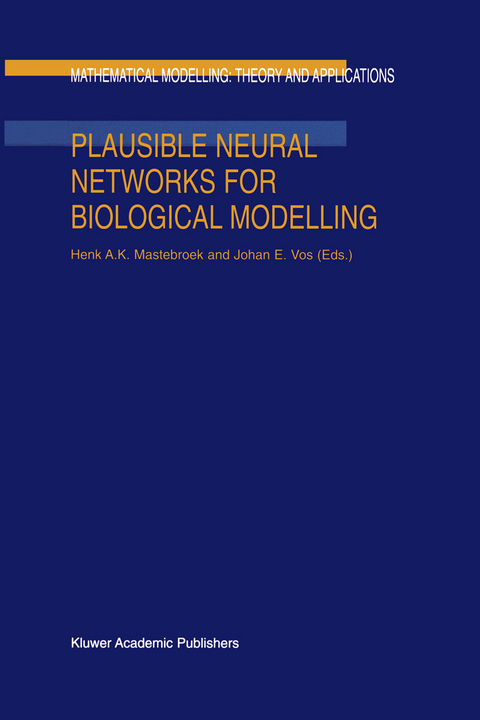
Plausible Neural Networks for Biological Modelling
Springer (Verlag)
978-94-010-3864-5 (ISBN)
I Fundamentals.- 1 Biological Evidence for Synapse Modification Relevant for Neural Network Modelling.- 2 What is Different with Spiking Neurons?.- 3 Recurrent Neural Networks: Properties and Models.- 4 A Derivation of the Learning Rules for Dynamic Recurrent Neural Networks.- II Applications to Biology.- 5 Simulation of the Human Oculomotor Integrator Using a Dynamic Recurrent Neural Network.- 6 Pattern Segmentation in an Associative Network of Spiking Neurons.- 7 Cortical Models for Movement Control.- 8 Implications of Activity Dependent Processes in Spinal Cord Circuits for the Development of Motor Control; a Neural Network Model.- 9 Cortical Maps as Topology—Representing Neural Networks Applied to Motor Control: Articulatory Speech Synthesis.- 10 Line and Edge Detection by Curvature—Adaptive Neural Networks.- 11 Path Planning and Obstacle Avoidance Using a Recurrent Neural Network.
| Reihe/Serie | Mathematical Modelling: Theory and Applications ; 13 |
|---|---|
| Zusatzinfo | IX, 262 p. |
| Verlagsort | Dordrecht |
| Sprache | englisch |
| Maße | 155 x 235 mm |
| Themenwelt | Informatik ► Grafik / Design ► Digitale Bildverarbeitung |
| Mathematik / Informatik ► Informatik ► Theorie / Studium | |
| Mathematik / Informatik ► Mathematik ► Angewandte Mathematik | |
| Naturwissenschaften ► Biologie ► Evolution | |
| Naturwissenschaften ► Biologie ► Humanbiologie | |
| Naturwissenschaften ► Biologie ► Zoologie | |
| Naturwissenschaften ► Physik / Astronomie ► Thermodynamik | |
| ISBN-10 | 94-010-3864-3 / 9401038643 |
| ISBN-13 | 978-94-010-3864-5 / 9789401038645 |
| Zustand | Neuware |
| Haben Sie eine Frage zum Produkt? |
aus dem Bereich


